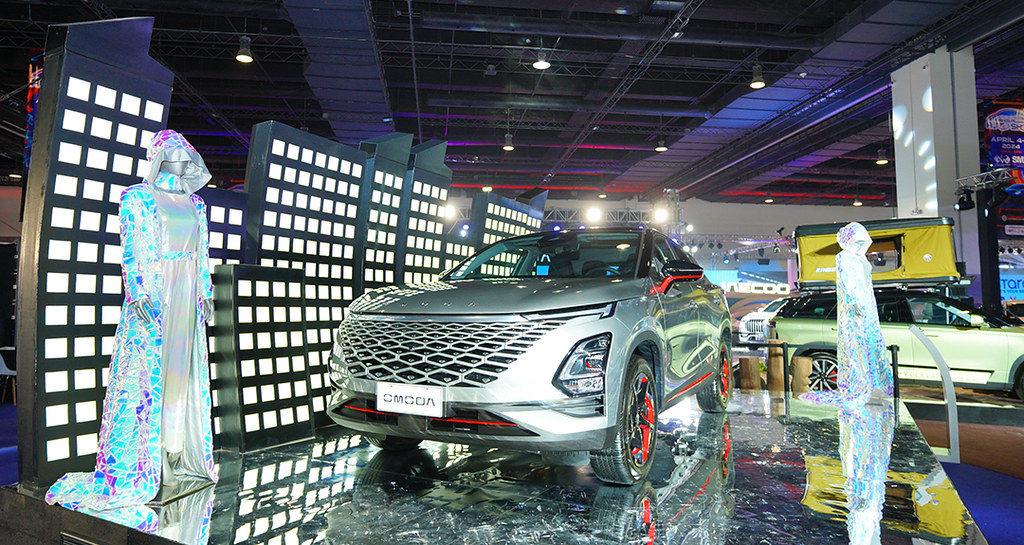When it comes to trucks, size matters. And while the high-riding, wide-bodied Ford Ranger Raptor has been lording it over its pickup truck competition since it was launched two years ago, its mantel of ‘King of the Mountain’ has been unceremoniously usurped by none other than its own sibling—the Ford F-150.
And it’s not even the top-of-the-food-chain F-150 Raptor (which isn’t officially available here), just the relatively tamer (but much more luxurious) SuperCrew 4×4 Platinum. Let’s see how these two alpha dogs measure up against each other.
Tale of the tape
The Ranger Raptor is one big mutha, but you’d expect the F-150 to eclipse it in every dimension. Surprise! Yes, the American-made F-150 is a massive 19 inches longer than the Thai-made Raptor; but get this, the Raptor is as wide as the F-150! (Well, if you disregard the infinitesimal 1mm in difference, 2028 versus 2029mm.) And when you’re looking at your rearview mirror and you see a huge truck that’s almost as wide as the lane itself, that’s the intimidation factor at work right there.
Height? The F-150 is taller by 3.4 inches. Ground clearance? For truckers, this is the more important measurement; and here the Ranger Raptor wallops the F-150, 283 to 239mm—that’s a significant almost two inches of extra space between the underbelly and the ground. That ground clearance advantage is approximately translated to the two trucks’ water-wading capabilities, with the Raptor’s 850mm fording depth almost four inches higher than the F-150’s.
Approach and departure angles are not much different between the two: 24 degrees for the two measurements for the Ranger Raptor and 25.7 and 26.8 degrees for the F-150.


Under the hood
The two trucks go in opposite directions in terms of motive power. The Ranger uses a surprisingly small twin-turbo 2.0-liter four-cylinder diesel engine while the F-150 is propelled by a 3.5-liter turbocharged gasoline V6.
Numbers? The Raptor delivers 213ps at 3,750 rpm and an even 500Nm of torque from an impressively low 1,750 rpm. In contrast, the F-150 gushes out 380ps at a much higher 5,000 rpm and a whopping 637Nm at 3,500 rpm. The F-150 puts out bigger max output numbers, but you need to rev the engine higher (and burn more fuel) to get them. The Raptor, meanwhile, is already delivering monster torque at barely higher than idling speed.
The F-150 also weighs a substantial 700 pounds more, so the Ranger Raptor, with more torque down low, will feel nimbler and more agile, especially accelerating from a rolling start (it accelerates from 50-100 km/h in 6.8 seconds).
Performance is also largely affected by gearing, but in this regard, both trucks are on equal footing, as they both use the exact same transmission—Ford’s 10-speed automatic (which also appears in the Mustang). The Ranger Raptor still has an advantage, though—it has cool magnesium paddle shifters that let you shift up and down all 10 speeds with a flick of your fingers.

Underchassis
The Ranger Raptor might seem like a rugged brute on the outside, but underneath it has fancy goodies that’ll make any car enthusiast drool. It’s got beautiful aluminum double wishbones (most trucks use stamped or welded steel) that could have come from an Italian sports car. All four wheels are suspended on very expensive Raptor-customized Fox Racing shocks with trick coilovers at the rear.
The F-150, while not having the trick Fox shocks, still has a very decent suspension: double wishbones with coilovers at the front and high-performance twin-tube gas shocks at the rear.
Both have electronic shift-on-the-fly four-wheel drive systems. The Ranger Raptor trumps this particular contest with its Terrain Management System that electronically adjusts the truck’s drivetrain to pavement, gravel, mud, or snow. The most fun settings, of course, are the Sport and Baja modes, which will transform the reactions of the truck to near sports car-like levels on pavement or on dirt, respectively.
Yet another performance influencer are the tires: the Ranger Raptor rolls on Baja-ready 33-inch-overall-diameter 285/70R-17 off-road tires while the F-150 Platinum has surprisingly narrower and more street-oriented 275/55R-20 all-terrain rubber.

Body and frame
Both trucks have their respective unique designs. The Ranger Raptor has a heavily reinforced chassis (compared to the regular Rangers) and a high-tech plastic composite outer shell for the rear cargo box.
The F-150, meanwhile, uses high-strength steel for its frame while its body and cargo box are made of lightweight high-strength heat-treated aluminum.


Verdict
No outright winners here as the two siblings have vastly different target markets and a huge price gap of one million pesos. The P1,998,000 Ranger Raptor is a surprisingly refined midsize diesel truck whose otherworldly performance capabilities vastly surpass that of most people who will ever own one. It’s the alpha in pure performance and the closest thing to a sports car that a pickup truck can get.
The P2,998,000 F-150 SuperCrew 4×4 Platinum, on the other hand, is an immensely strong full-size truck whose astoundingly long suite of luxury and safety features and vast interior space will put a lot of executive sedans to shame. It’s the alpha in sheer size, power, and luxury.












